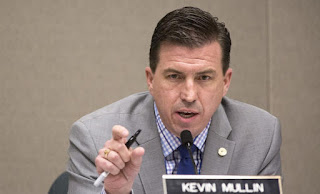The $3 billion enterprise, known formally as the California Institute for Regenerative Medicine (CIRM), expects to run out cash for new research awards this year, perhaps as early as September.
It has sufficient funds to administer its remaining 211 ongoing awards and keep the lights on. But it has only $114 million left before its research coffers are empty.
CIRM is attempting, however, to raise privately $220 million to bridge the gap in research funding between this year and late 2020. The success of that effort is still unknown.
CIRM was created in 2004 by Proposition 71, a ballot initiative that also financed the agency with California state bonds (borrowed money). Since then it has awarded $2.6 billion for stem cell research, including involvement in 53 clinical trials, which are the last stage prior to federal approval of a treatment for widespread use.
Despite the rosy expectations of 2004 campaign, CIRM has not yet backed research that has led to a stem cell therapy that is widely available for public use.
CIRM has scheduled two significant meetings for Wednesday May 15. One involves the agency's budget for the fiscal year that begins July 1. The other involves "discussion of ideas for (a) new initiative."
For readers unfamiliar with the initiative process in California, it is a method for placing before voters proposals for new state laws and funding and basically bypasses the legislature. To qualify a measure for the ballot in the fall of 2020, stem cell research supporters will need to gather hundreds of thousands of valid signatures of registered voters. Usually that is done by hiring firms that specialize in that sort of collection.
Current estimates of the cost of each signature run around $6.00. Estimates of the total cost of a ballot campaign for a new stem cell initiative run in the neighborhood of $50 million, which would have to be raised privately by supporters of the research -- not the agency.
CIRM is stepping cautiously into the ballot initiative process because of legal constraints. Scott Tocher, CIRM's general counsel, said in a statement to the California Stem Cell Report,
"While a public agency is not permitted to advocate for or against a ballot measure because it is barred from using public funds in an effort to convince the voters with respect to a particular policy position, a public agency may conduct research and draft a ballot measure because these activities are not aimed at persuading voters.
"For instance, the (California) attorney general has concluded that public agencies may engage in outreach to obtain input and assess the feasibility of a measure. In our case, of course, we don’t even have a ballot measure on the ballot yet. The purpose of the meeting is to discuss elements that a future measure might contain, not to campaign for a measure’s passage."
The agency has not yet disclosed its proposed operational budget for the fiscal year that begins July 1. But CIRM is limited by the ballot initiative that created the agency to spending no more than 6 percent of the total it has awarded. This year's operational budget approached $17 million. The spending plan for the next fiscal year is expected to be less.
In the next few days, the California Stem Cell Report will carry more on the upcoming CIRM meetings, including the perspective from Robert Klein, who headed the 2004 ballotcampaign. Klein was also the first chairman of the agency and is eager to see it funded anew with as much as $5 billion.





